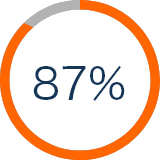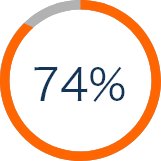Lesson Report
レッスンレポート
フルフルでは英会話レッスンに留まらず、レッスン後の復習面と課題の克服も英語上達の大切な一貫として徹底的にサポートします。
ここではレッスン毎にお届けする、書き起こしスクリプト、講師による添削、To Doリスト、学習進捗データを含むレッスンレポートの実例をご紹介します。

S.Fさん 男性の場合
英会話歴5年
フルフル受講歴 3ヶ月
レッスンデータ例
AIによる書き起こし単語数
1120 words
生徒771単語 + 講師349単語
添削指摘数
64箇所
使った単語数
711 words
生徒さんの使用単語数
使った単語種類
279 words
生徒さんの使用単語種類
※レッスンの後半10分間で書き起こされた文字、単語、添削数を表示しています。
※データ例の表示項目は変更される場合がございます。
Script and Correction Sample
書き起こし & 添削事例
会話をスクリプト化し文章でも講師からの指摘・添削を受ける事で、何をどう改善するべきかを明確にします。
※添削前後の表示は、実際の画面とは見え方が異なります。
※実際の画面では添削後の表示の場合での音声頭出し機能は提供しておりませんが、添削前の頭出し再生ボタンから該当箇所の音声をお聞き頂けます。
※AIの書き起こしは講師の発言も全て書き起こされますが、清書スクリプトでは講師のスクリプトは書き起こされない場合がございます。
添削前
音声は分かりやすいように一文単位で頭出しが可能です!
Okay, So what is actually done in Japan?
30秒ごとの頭出し再生も可能です!
添削前後を簡単に比較!
They started production in China.
So do you still make the prototypes in Japan and everything?
But then they would send the prototype to China, and then they would reproduce it
Do you travel abroad for your job?
So what is your primary role in the company?Like, is that Is that you?
You're kind of the communication experts, and you deal with the factories.
You know, we talk about, you know, (R) costing, pricing, and and I also, you know, manage (S) the, what do you say, delivery date and…
Organizing, shipping and deadlines and things like that.
Uh oh.
So how is work going at the moment?
It's I'm sure it's completely different because of Covid 19.
People didn't want to buy clothes, but after a few months, maybe they got tired of, you know, staying (W) in the house.
And this month, (X) getting better.
I mean, total sales (Y) was coming, you know, (Z) going back.
You have an online presence.
Do you sell Direct online are mostly through retailers
We used to have our, you know, own website to sell our products.
But now we sell to our (D2) customer who sell our products online.
And also, you know, I we sell our products to our retailers, retail stores.
I'm just wondering if I remember the Japanese names.
The biggest, you might know. XXX?
But they have, like 1500 stores in Japan.
So (F2) the quantity maybe little more than XXX?
Of course.
(N2) we're specializing denim, (O2) I mean bottoms.
So we have, you know, all the knowledge maybe so.
And I guess you said it's recovered now.
In China like that?
However your supply.
Shut down.
So we were expecting, like, (Y2) short short pants in March, then April, but, you know, some products were delayed too much, so we had to (Z2) sell (A3) these products, you know, next year. (B3) After China started to open, I mean, (C3) they’re factories are opening like mostly all their factories are opening now.
They were next.
Yeah, but it was Bangladesh open Now, though
I mean, their situation is (G3)not good.
They're still having, like, 3000, how do I say?
Didn't mean to do that.
Bangladesh is a developing country,
And now, you know, apparel is like 80 to 90% of their exports.
So even, though, the coronavirus is spreading, they cannot stop the factory.
Because you work with both countries.
添削後
I mean, this company
Okay, So what is actually done in Japan?
Then we send (B) them to China. In this area, they used to make jeans and bottoms you know, in Japan, but, you know, (C) that drives the price up/increases the price.
Yeah,
Maybe 20 or 30 years ago, you know, our company (E) moved to, you know, started to produce in China.
Maybe 20 or 30 years ago, you know, our company (E) moved production to/started producing in China.
So do you still make the prototypes in Japan and everything?
but then they would send the prototype to China, and then they would reproduce it
Do you travel abroad for your job?
So what is your primary role in the company?
Like, is that Is that you?
You're kind of the communication experts, and you deal with the factories.
You know, we talk about, you know, (R) costing, pricing, and and I also, you know, manage (S) the, what do you say, delivery date and…
You know, we talk about, you know, (R) pricing and I also, you know, manage (S)our logistics and shipping…
Organizing, shipping and deadlines and things like that.
Uh oh.
So how is work going at the moment?
It's I'm sure it's completely different because of Covid 19
 (W) home.
(W) home. And this month, (X) it’s been getting better.
People didn't want to buy clothes, but after a few months, maybe they got tired of, you know, staying (W) in the house.
And this month, (X)getting better.
People didn't want to buy clothes, but after a few months, maybe they got tired of, you know, staying (W) home.
And this month, (X) it’s been getting better.
I mean, total sales (Y) are coming back, you know, (Z) recovering.
Yeah, I can’t say that. (A2) Not as bad as we expected a few months ago.
Yeah, I can’t say that. (A2) It was not as bad as we expected a few months ago.
Then, people are starting (B2) buy more things (C2) Internet online.
Then, people are starting (B2) to buy more things (C2) online. You know, the percentage is growing, compared to retail.
You have an online presence.
Do you sell Direct online are mostly through retailers
We used to have our, you know, own website to sell our products.
But now we sell to our (D2) customers who sell our products online.
And also, you know, I we sell our products to our retailers, retail stores.
I'm just wondering if I remember the Japanese names.
The biggest, you might know. XXX?
But they have, like 1500 stores in Japan.
So (F2) they might sell slightly higher quantities than XXX?
And (G2) another stores like XXX.
And (G2) other stores like XXX.
Of course.
But we are good at making cheaper but good quality products. (N2) we're specializing denim, (O2) I mean bottoms.
But we are good at making cheaper but good quality products. (N2) we specialise in denim, (O2)in bottoms.
So we have, you know, all the knowledge maybe so.
And I guess you said it's recovered now.
In China like that?
However your supply.
Shut down.
So we were expecting, like, (Y2)shorts in March, then April, but, you know, some products were delayed too much, so we had to (Z2) delay (A3)those products, you know, until next year.
(B3) Now China has started to open, I mean, (C3)their factories are mostly all open or are opening now.
But after China started to open, all (D3) the Bangladesh closed.
But after China started to open, all (D3)of Bangladesh closed.
They were next.
Yeah, but it was Bangladesh open Now, though
I mean, their situation is (G3)(still) not good.
They're still having, like, 3000, how do I say?
Didn't mean to do that.
Bangladesh is a developing country,
And now, you know, apparel is like 80 to 90% of their exports.
So even, though, the coronavirus is spreading, they cannot stop the factory.
Because you work with both countries.
To do list
To Doリスト
この目標を達成するため次回レッスンで集中的に練習し、確実に改善出来るよう指導します!
共有To Do
共有To Doは講師が改善・練習が必要だと判断したポイントを共有します。講師と一緒にこの共有To Doをクリアしながら上達を目指します。
- To Do 1
- Try to use more full sentences! It takes longer, but it's good practice for formal writing.
- To Do 2
- Remember to use different tenses instead of the simple present tense. The simple present tense is only used for routines and general repeated actions.
- To Do 3
- Try and avoid overusing articles like 'the' and 'a'. We can usually refer to objects directly in speaking.
個人To Do
個人To Doは、講師が登録したTo Doリストの中からあなたが自身で完結できそうなものをリスト化し、自習に役立てることができます。
- To Do 1
- Try sentences with some new words and phrases.
- To Do 2
- Practice to speak with longer sentences.
- To Do 3
- Make sure to use correct articles.






ネイティブ講師からの総評
次回からの注意点やTo Doリストに関する共有はもちろん、レッスンに対する感想やコメントなどを受け楽しくモチベーションを継続しながら学ぶことができます。
It was a blast! I'm super impressed with your communication skills when having these direct communications.
Your fluency is great! Just take care to use more full sentences.
This is good practice. In addition, I think your communication skills were excellent but I’ll try and speak a bit faster next time.
I think you're used to slow English, but it's good to become accustomed to the speed of a native speaker! Don't worry, we'll increase slowly!
Take care and enjoy the rest of your weekend too!